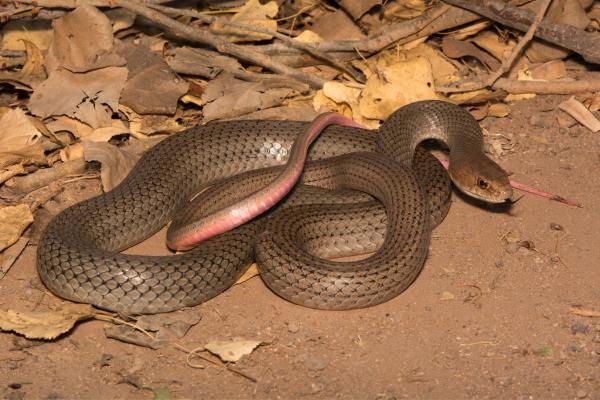Yucatán is home to 58 different snake species, each playing a vital role in maintaining the region’s ecological balance. The vast majority of Yucatán’s snakes are harmless; only two out of nine families are venomous, but even these are crucial for pest control and pharmaceutical research. This article introduces nine representative snakes of Yucatán, providing essential information for anyone curious about the state’s rich reptilian diversity.

Yucatecan Cantil (Agkistrodon russeolus)
Whip Snake (Coluber mentovarius)
Indigo Snake (Drymarchon melanurus)
Yucatán Rat Snake (Pseudelaphe phaescens)
Scorpion-eating Snake (Stenorrhina freminvillei)
Fer-de-Lance (Bothrops asper)
Yucatecan Rattlesnake (Crotalus tzabcan)
Variable Coral Snake (Micrurus apiatus)
Green Vine Snake (Oxybelis fulgidus)
This venomous pit viper is endemic to the Yucatán Peninsula. It hunts by hiding under leaf litter, using its tail to lure prey close before striking with powerful necrotic and hemolytic venom. Its bite can be extremely serious for humans, sometimes requiring amputation. Despite the danger, it plays a critical role in controlling rodent populations.

Also known as the Chirriadora or Runner Snake, this species reaches up to 1.5 meters in length. It’s a fast, active hunter that preys on small snakes, lizards, and sometimes small mammals. The whip snake’s long tail delivers defensive lashes, giving rise to its common name.

Known as the Blue or Black Snake, the Indigo Snake is one of the largest in Yucatán, reaching up to 2–3 meters. Its coloration shifts from brown to black toward the tail. Distributed from Texas to El Salvador, this impressive snake feeds on eggs, turtles, other snakes, and small mammals.

Endemic to the Yucatán Peninsula, the Yucatán Rat Snake feeds mainly on rodents and bats. It’s a nocturnal species, reaching up to 2 meters in length, and is easily recognized by its large, striking eyes. Although non-venomous, it’s vital for natural rodent control.

This ground-dwelling species is found from Yucatán down to Costa Rica, feeding mostly on scorpions and tarantulas. Medium-sized (50–60 cm), it is nocturnal and non-venomous, making it a valuable ally in the fight against harmful insects.

The largest and most dangerous venomous snake in Yucatán, the Fer-de-Lance can grow to 1–1.8 meters. Responsible for the most snakebite incidents in the region, its bite delivers large amounts of hemolytic and necrotic venom. It is nocturnal and expertly camouflaged.

Endemic to Yucatán, this large rattlesnake measures between 1.3–1.6 meters and displays distinctive white diamond-shaped markings. It coils and raises its head before striking, delivering a potent neurotoxic, hemolytic, and necrotic venom used to hunt rodents, large lizards, and squirrels.

Characterized by red, yellow, and black bands, the Variable Coral Snake’s pattern varies greatly, hence the name. Though highly venomous, it’s generally shy and only bites when threatened. It preys on other snakes, lizards, and sometimes even members of its own species. Bites require immediate medical attention, as the neurotoxic venom can be life-threatening.

Striking for its bright green color and pointed snout, the Green Vine Snake can reach up to 2 meters in length. While mildly venomous, it is harmless to humans. This arboreal species patiently ambushes small birds, lizards, or mice in the trees, paralyzing them before swallowing whole.

Whether venomous or non-venomous, snakes are vital for Yucatán’s ecosystems. They regulate populations of pests and rodents and provide a foundation for medical research. Protecting these snakes is crucial for both ecological balance and human health.
Want to learn more about Yucatán’s reptiles and biodiversity? Follow our wildlife encyclopedia section for more in-depth animal profiles!
Bibliografía
Díaz, L. F. (2020). Serpientes venenosas en la península de Yucatán: conocerlas para respetarlas. Bioagrociencias, 13(2).
Díaz, L., May, D., Gallardo, A., Chiappa,
animal tags: Yucatán Snakes
We created this article in conjunction with AI technology, then made sure it was fact-checked and edited by a Animals Top editor.